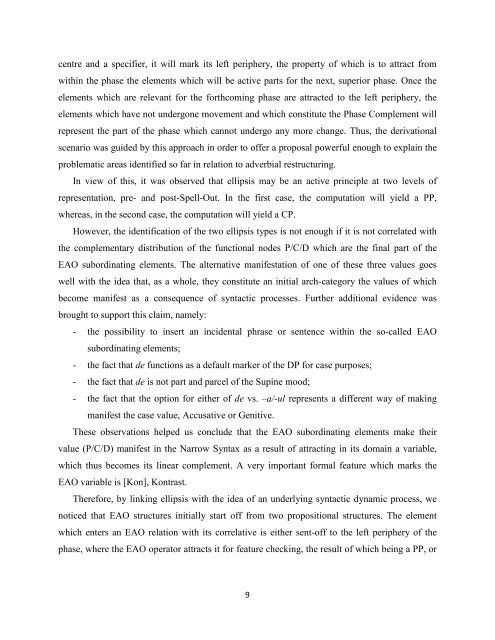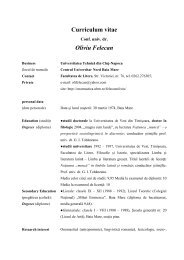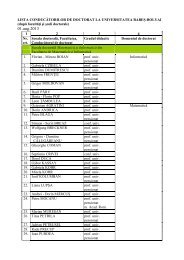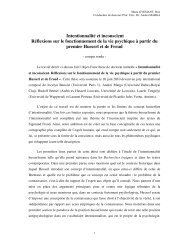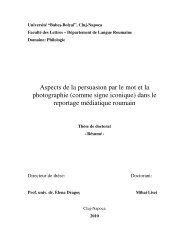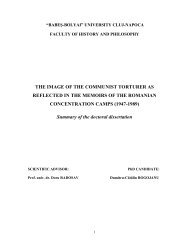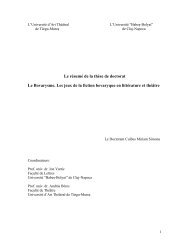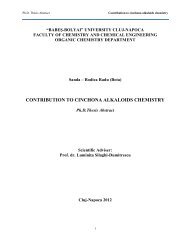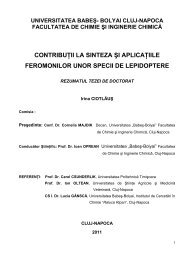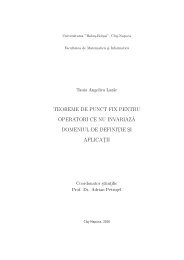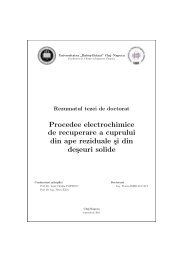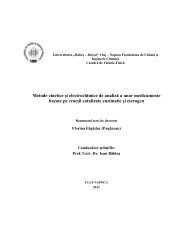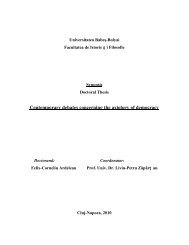ADVERBIAL RESTRUCTURING IN CONTEMPORARY ... - Doctorat
ADVERBIAL RESTRUCTURING IN CONTEMPORARY ... - Doctorat
ADVERBIAL RESTRUCTURING IN CONTEMPORARY ... - Doctorat
Create successful ePaper yourself
Turn your PDF publications into a flip-book with our unique Google optimized e-Paper software.
centre and a specifier, it will mark its left periphery, the property of which is to attract from<br />
within the phase the elements which will be active parts for the next, superior phase. Once the<br />
elements which are relevant for the forthcoming phase are attracted to the left periphery, the<br />
elements which have not undergone movement and which constitute the Phase Complement will<br />
represent the part of the phase which cannot undergo any more change. Thus, the derivational<br />
scenario was guided by this approach in order to offer a proposal powerful enough to explain the<br />
problematic areas identified so far in relation to adverbial restructuring.<br />
In view of this, it was observed that ellipsis may be an active principle at two levels of<br />
representation, pre- and post-Spell-Out. In the first case, the computation will yield a PP,<br />
whereas, in the second case, the computation will yield a CP.<br />
However, the identification of the two ellipsis types is not enough if it is not correlated with<br />
the complementary distribution of the functional nodes P/C/D which are the final part of the<br />
EAO subordinating elements. The alternative manifestation of one of these three values goes<br />
well with the idea that, as a whole, they constitute an initial arch-category the values of which<br />
become manifest as a consequence of syntactic processes. Further additional evidence was<br />
brought to support this claim, namely:<br />
- the possibility to insert an incidental phrase or sentence within the so-called EAO<br />
subordinating elements;<br />
- the fact that de functions as a default marker of the DP for case purposes;<br />
- the fact that de is not part and parcel of the Supine mood;<br />
- the fact that the option for either of de vs. –a/-ul represents a different way of making<br />
manifest the case value, Accusative or Genitive.<br />
These observations helped us conclude that the EAO subordinating elements make their<br />
value (P/C/D) manifest in the Narrow Syntax as a result of attracting in its domain a variable,<br />
which thus becomes its linear complement. A very important formal feature which marks the<br />
EAO variable is [Kon], Kontrast.<br />
Therefore, by linking ellipsis with the idea of an underlying syntactic dynamic process, we<br />
noticed that EAO structures initially start off from two propositional structures. The element<br />
which enters an EAO relation with its correlative is either sent-off to the left periphery of the<br />
phase, where the EAO operator attracts it for feature checking, the result of which being a PP, or<br />
9


